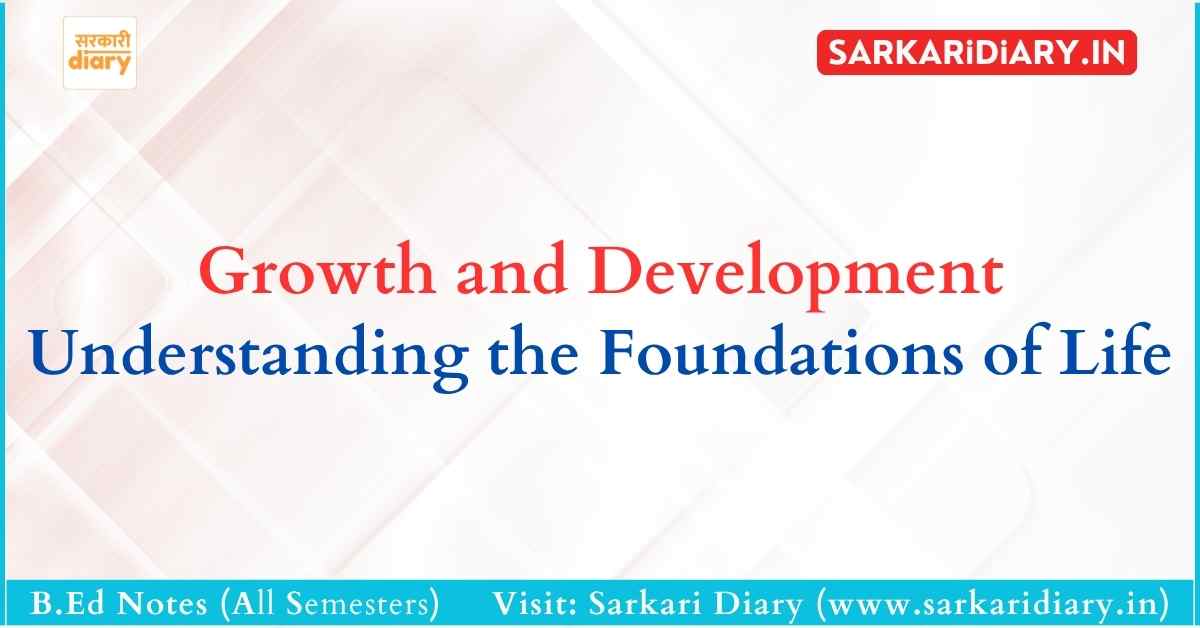Growth and Development: Change is an essential characteristic of life. Whether it is a seed turning into a tree or a child growing into an adult, transformation marks every stage of existence. This continuous process is broadly classified into two interrelated phenomena: growth and development.

The Law of Change in Nature
In nature, everything is subject to change—both living (animate) and non-living (inanimate) things. However, living beings are distinct because they undergo self-directed, progressive change and possess the ability to reproduce, ensuring the continuation of their species.
For instance:
- A seed germinates, grows into a sapling, then into a plant or tree, eventually flowering and producing seeds or fruits.
- Likewise, animals and humans reproduce and pass on traits from one generation to the next through biological reproduction.
Beginning of Human Life: The Prenatal Journey
Human life begins with the process of fertilisation, where the sperm cell from the father unites with the ovum (egg cell) of the mother. This fusion leads to the formation of a zygote, marking the start of a new life within the mother’s womb.
Stages Before Birth
| Fertilisation | Union of male and female gametes (sperm and ovum) |
| Prenatal Stage | The nine-month period of growth inside the womb |
| Birth | The transition of the foetus into an independent human being |
Note: The prenatal period is generally not counted in one’s chronological age, which begins from the time of birth.
This phase is similar to the germination phase of a seed, where crucial foundational growth occurs before emergence into the outside world.
What is Growth and Development?
The terms growth and development are often used together but have distinct meanings in the context of human life.
| Aspect | Growth | Development |
|---|---|---|
| Definition | Refers to quantitative changes such as increase in size, height, weight, etc. | Refers to qualitative changes in abilities, functions, behaviour, and personality |
| Nature | Measurable and physical | Progressive and holistic |
| Example | Increase in height or weight | Improvement in thinking, emotional maturity, social skills |
Combined Impact
Both growth and development are continuous and interconnected. While growth is primarily physical, development encompasses cognitive, emotional, and social aspects of an individual’s life.
The Importance of Studying Growth and Development
Understanding these processes is essential for educators, psychologists, parents, and healthcare professionals for several reasons:
- Supports age-appropriate learning and teaching strategies
- Helps identify developmental delays or disorders early
- Guides effective parenting and child-rearing practices
- Assists in designing suitable educational curricula
- Promotes healthy physical, emotional, and social development
Conclusion
Growth and development are fundamental aspects of life that begin even before birth and continue throughout an individual’s lifespan. These processes are influenced by genetics, environment, nutrition, and social factors. Recognising and supporting the various stages of growth and development is vital for nurturing well-rounded individuals.